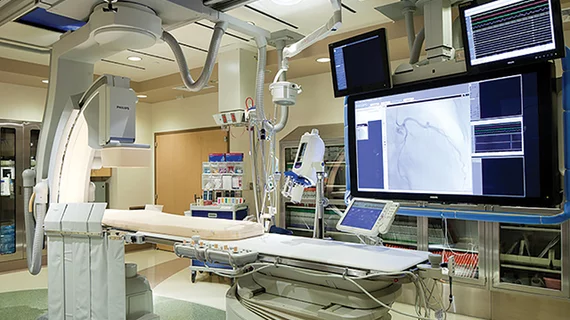Researchers review PCI outcomes, find little evidence of a ‘July effect’ in interventional cardiology
July typically marks the beginning of a new training cycle for academic medical centers, meaning fresh trainees with less experience are suddenly seeing patients and making important treatment decisions.
Previous research, including one study published in the Journal of Internal Medicine back in 2010, suggested that this so-called “July effect” often leads to a rise in avoidable medical errors. But is this an issue in interventional cardiology? A team of researchers out of the University of Virginia Health System (UVA Health) aimed to find out, sharing their findings in the American Journal of Cardiology.[1]
“Most of the data relating patient outcomes to the training cycle has focused on surgical specialties and many of these studies did not find major differences in outcomes based on the time of year,” wrote lead author Saad Sultan Ghumman, MD, from the division of cardiovascular medicine at UVA Health, and colleagues. “There are very little data regarding cardiovascular trainees, and none specifically studied percutaneous coronary intervention (PCI) training. Mandated participation in the National Cardiovascular Data Registry (NCDR) with the collection of data using standardized definitions makes the cardiac catheterization laboratory an attractive environment to study the effect of training on patient outcomes.”
Ghumman et al. tracked NCDR data from a single cath lab associated with a 645-bed academic institution. The analysis included 1,025 PCI patients treated from April to June (Q2) and 964 PCI patients treated from July to September (Q3). All patients were treated from 2011 to 2017.
Clinical characteristics were similar across Q2 and Q3, the team noted, and acute coronary syndrome was the most common reason for PCI for both groups.
Overall, there was “no difference” in the rate of overall nonfatal adverse events between the two groups. The same was also true for the rates of post-PCI bleeding events, shock and heart failure.
Stroke (0.7% vs. 0.1%) and PCI risk-adjusted mortality (1.9% vs. 0.8%), however, were slightly more common during Q3.
“We found that, for the most part, there was no significant difference in quality metrics or most adverse events at the start of an academic year as compared with the end of an academic year for patients who underwent PCI,” the authors wrote. “However, we did observe a higher incidence of post-PCI cerebrovascular events and a higher mortality rate in Q3 as compared with Q2. This finding may support the concept of a July Effect.”
Looking even closer at the data, the team added, “suggests this is not entirely clear.” Some of the different outcomes, for example, could potentially be explained by slight differences in the patients treated during Q2 and Q3. Also, trainees in parts of the facility other than the cath lab may also be making an impact that cannot be properly measure by the analysis.
“Additional studies combining data from multiple academic centers representing a broader subset of our population and studies focusing on diagnostic catheterization training and structural and peripheral interventional training are necessary to determine if there exists a July Effect in cardiology procedural training,” the group concluded.
Related PCI Content:
Continued anticoagulation after primary PCI boosts survival among STEMI patients
Left main PCI still safe at hospitals without onsite cardiac surgery
Tracking non-primary PCI outcomes among men and women
Reference:

